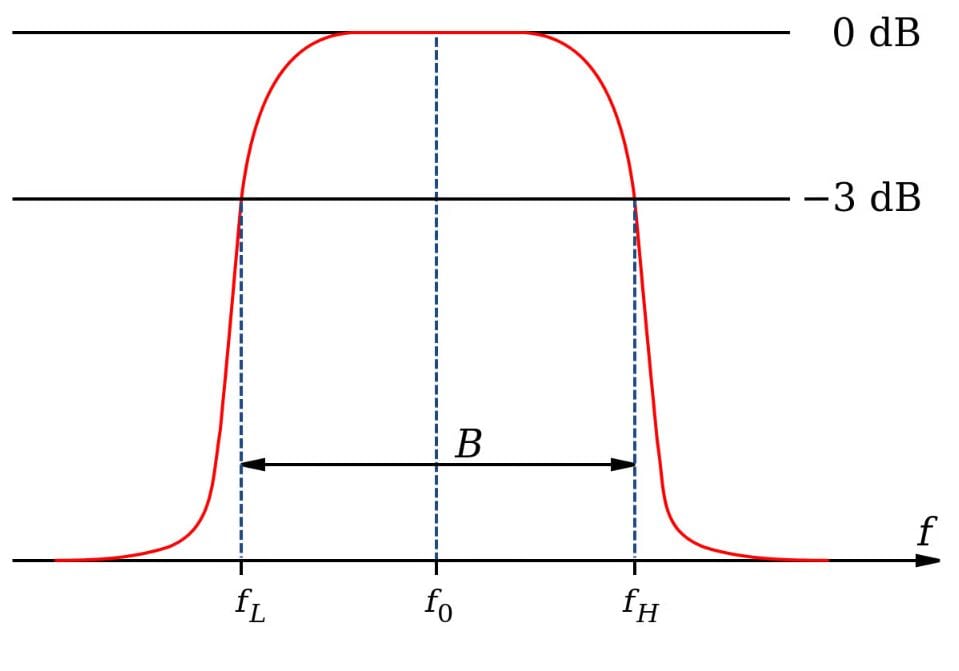In electronics and telecommunications, the bandwidth is the part of the spectrum of frequency values that can be assumed by an electrical signal, without it being attenuated by passing through a filter. Informally, it is said that these are the frequencies that “pass” through the filter.
The value of the frequency, measured in Hertz, from which the signal no longer passes through the filter, is called the cutoff frequency. It is the low and high cutoff frequencies that delimit the passband.
Ideally, signals with frequencies above or below the filter cutoff values would be attenuated to zero. In practice, however, the half-power criterion is adopted: the cut-off frequency is considered to be that in which the signal power is attenuated to half of the original.

Bandwidth can be defined as the maximum throughput capacity on a given link, determined by the transmission technologies implemented using the equipment located at each end of this link.
What is the difference between bandwidth and band width capacity?
Bandwidth is the size of the signal bandwidth. It determines the measure of transmission capacity. In addition to being a concept used in computing, bandwidth is also used in signal processing, spectroscopy, optics and electronics.
In a network, bandwidth sets the speed at which data travels. In other words, the higher the bandwidth, the faster the connection will be, because more data will pass through it at the same time.
Finally, two filters can have the same bandwidth, for example 3 kHz, but different bandwidths: one with a bandwidth of 1 kHz to 4 kHz, the other from 40 kHz to 43 kHz.




